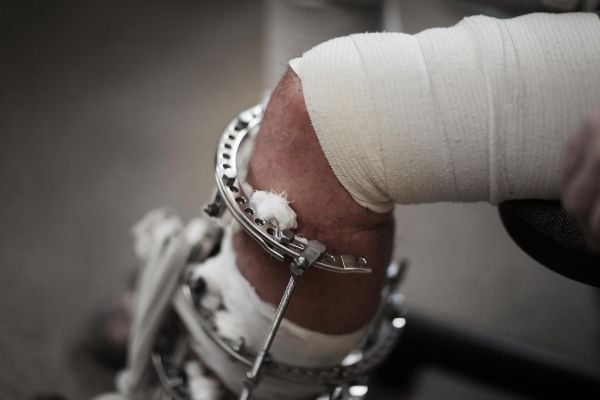10 Things You Need to Know About Stature Lengthening Surgery

Height is a crucial biological and physical component, but you cannot continue to grow taller once you reach a certain age. As such, it's common for people to be dissatisfied with their height. Of course, being shorter shouldn't affect your destiny in any way. But if you wish to gain a few inches, then stature lengthening procedure should be your next move.
In simple terms, this refers to cosmetic surgery for anyone who wishes to increase their height. Most individuals who go for the procedure are usually displeased with their body image. While there are several potentially practical exercises that you can include in your daily routine to grow your height, limb lengthening procedure still stands out as the most assured method.
Here are 10 Interesting Facts to Know About Stature Lengthening Surgery

1. Stature Lengthening Was Accidentally Invented
The procedure was invented in the 1950s, but the exciting part is that it came about as an accidental discovery by doctor Gavriil Ilizarov from Russia. The doctor was using the "external fixator" to treat bone fracture on one of his patients, but he wrongly turned the screws in the opposite direction. During his next visit and x-ray session, he noticed a new bone tissue forming within the gap. The doctor discovered the procedure thanks to this coincidence.
2. The First Cosmetic Stature Lengthening Was in 1992
Almost four decades after the accidental discovery, the first procedure of its kind was carried out on Mikhail Goldreer from Russia. Mikhail was able to increase his height by 6 cm. At the moment, he is a manager and psychologist at the Anthropometric Cosmetology and Correction Center. He established this facility in Volgograd, Russia.
3. Who Qualifies for This Procedure?
The right candidates for the stature lengthening procedure must be of sound general health. Stature lengthening is only carried out on patients whose bones have passed the growth phase, so the people who qualify for the treatment should be at least 16 years old. The process isn't for anyone who's obese, which may increase the risk of breaking the rods or fixators. As such, it would help if you shed some weight before the procedure, if you are over weight.
You should also avoid the procedure if you suffer from a chronic underlying condition such as bone, lung or heart disease. In such cases, the higher complications risk outweighs the potential benefits of stature lengthening.
4. The Basic Principles
Stature lengthening procedure leverages the innate healing capabilities of the bones. Recovery after a bone injury is usually easier since the cells regenerate to fill up the defects and damaged areas. The fractured bone will form a "callus" on the damaged region, which continues to harden as the part heals. With time, it may end up stronger than its original state.
For the bone to achieve its ultimate strength, you may have to wait for a year. However, most height surgery patients recover fast and can walk again in just six months.
5. What Stature Does Lengthening Involve?
A successful stature lengthening procedure is a complex, yet delicate procedure. To get the extra two or three inches, you have to undergo a surgical procedure where the femurs or the lower leg bones (fibula and tibia) are cut. The surgeon will then insert a mechanical device inside the bone, which gradually pulls the bones apart.
When the bones are pulled apart progressively, the nerves and soft tissues will stretch, similar to the muscles and blood vessels. All this helps create a growth stimulus that enables the bone to grow. The rest of the soft tissues will respond to the stretch by growing as well.
6. It's Not Limited to Cosmetic Purposes
The procedure may be famous for its cosmetic purpose, but it also facilitates effective treatments like deformity correction and equalization of the legs' length. A physician may recommend the procedure if someone has varying leg dimensions. This group may include short stature individuals, children or young people whose bones are still growing, and kids with anomalies in the growth plate.
For the best results, you must consider proper timing alongside your physician.
7. Risks of The Procedure
When you undergo this treatment, you will likely face the normal risks associated with surgery and anesthesia. These include breathing problems, allergic reactions to different medications, blood clots, infection, or bleeding.
The risks that are directly associated with stature lengthening procedure include:
- Osteomyelitis (Bone infection)
- Poor healing of the bones
- Damage to the nerves
- Blood vessel injuries
8. Preparation for the Procedure
Preoperative preparation before stature lengthening is crucial for you; it could positively impact the procedure's eventual outcome and your recovery time. For instance, you must ensure your hands are strong enough before the surgery since you'll use crutches or be in a wheelchair for some time.
It would help if you also were mentally and physically prepared for the operation. One great way to do this is by seeking a reliable personal trainer to help you build the body muscles. This will also help you improve your flexibility and enhance your cardiovascular fitness.
9. What Happens After the Surgery?
After undergoing a successful bone lengthening operation, you will stay in the hospital for a couple of days. Once you leave the hospital, you will continue to walk and work on increasing your range of motion recommended by your doctor. About a week after surgery, you will start the lengthening process using an external magnetic device. The time you'll have the device depends on the length to be added.
During recovery, you must undergo physical therapy to ensure you stick to the normal motion range. You must also offer exceptional care to the screws and pins that hold the device in place to avoid any instances of infection.
10. Surety of Results
One great benefit of this procedure is that it makes your dream a reality, and you are assured of your expected results. There's no guesswork with stature lengthening, and you're bound to experience increased height regardless of your current measurements.

As technology advances, more and more solutions continue to come up, making the process simpler and enabling faster recovery.
Let experts help you out
If you are always dissatisfied with your current height or feel self-conscious about your shortness to the point it compromises your joy, then do not fret. Many people have the same problem, and most have changed their lives thanks to our stature lengthening.
We are the industry leader in leg deformity correction and lengthening, and you can count on us for quality treatment and faster recovery.


